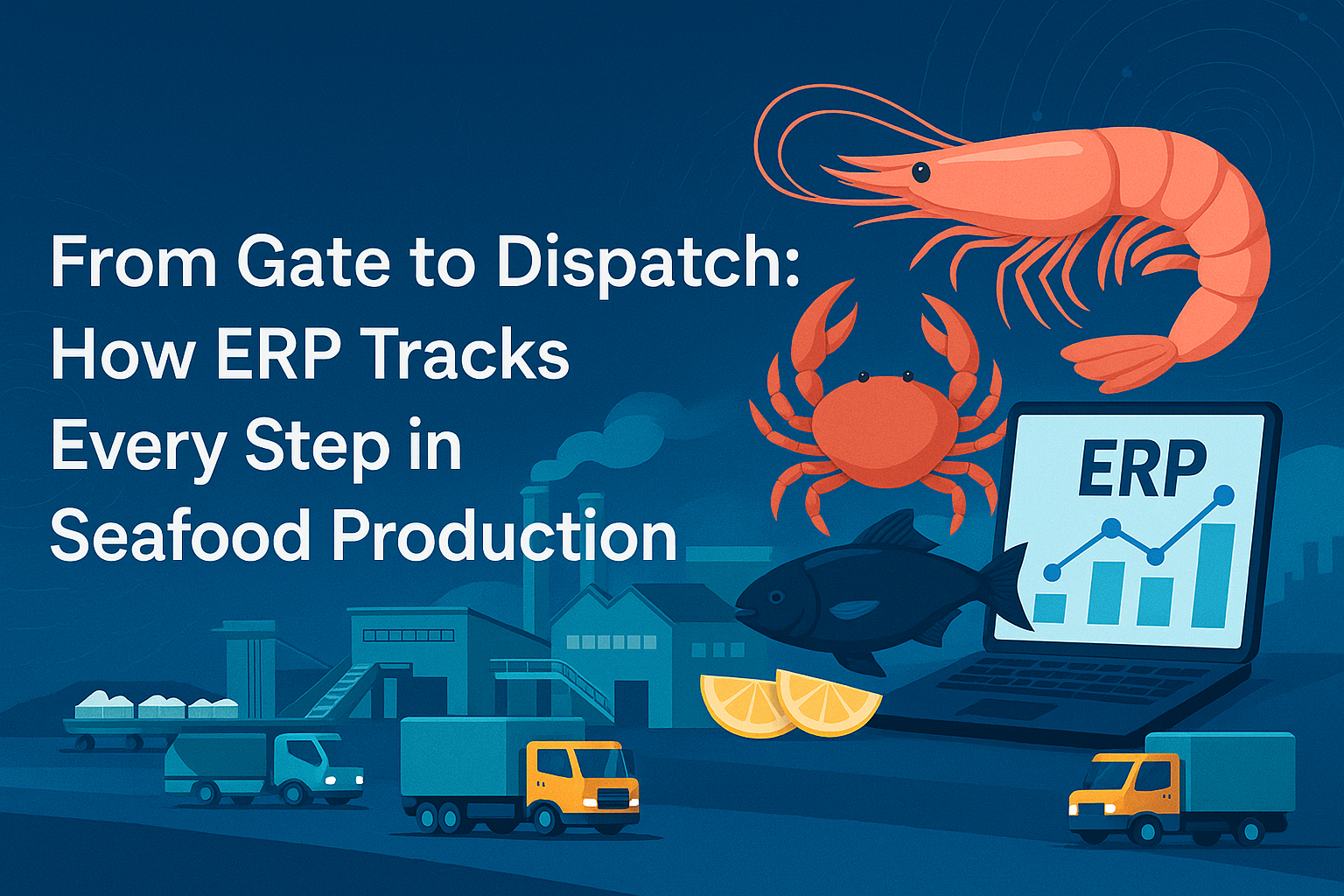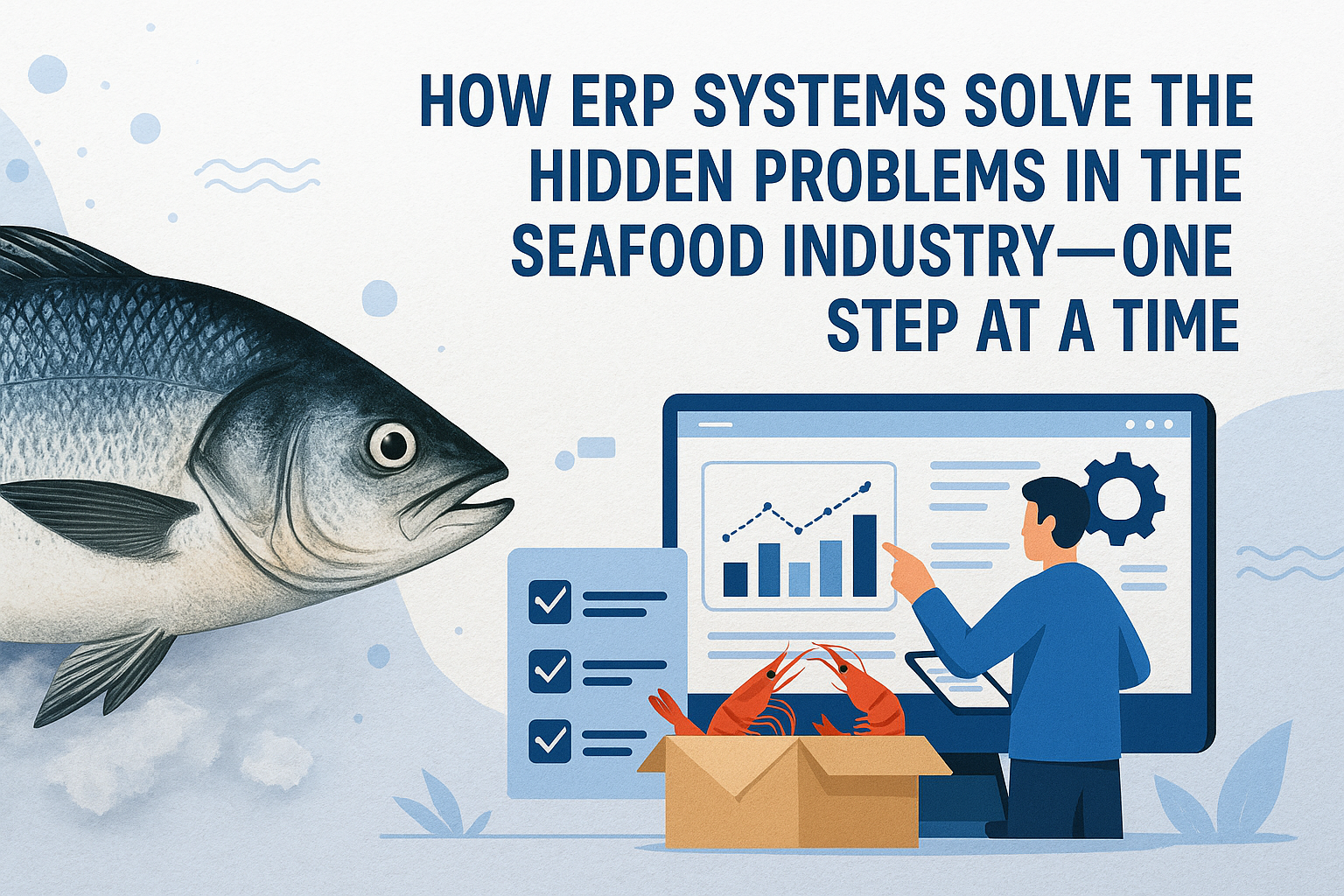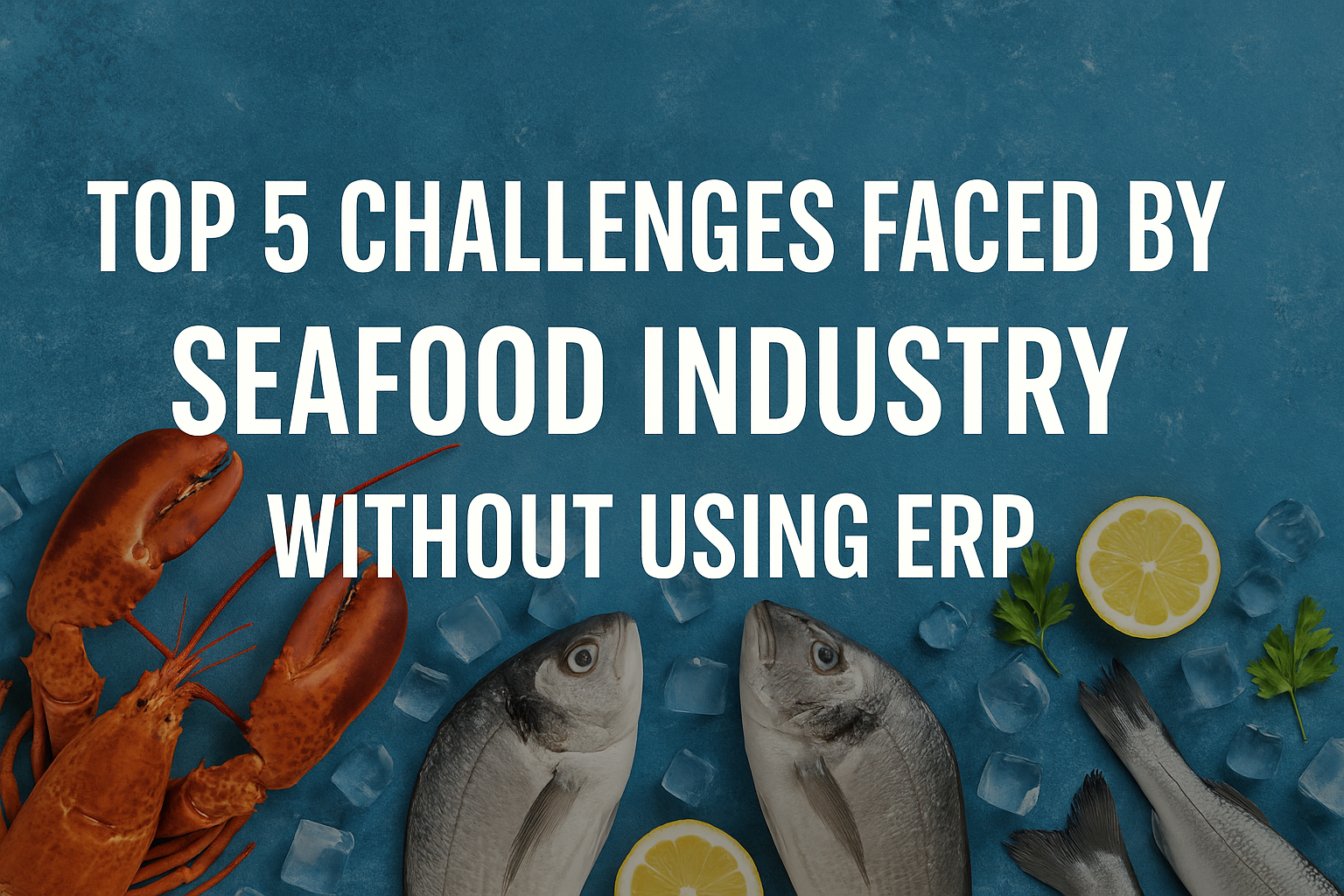
- By Umesh Dudule
- June 21, 2025
- No Comments
Seafood production is not like any other manufacturing process. It’s fast, it’s sensitive, and it leaves no space for error. Every moment counts when you’re dealing with raw material that spoils with time and temperature. There are lot of error faced by producer during production but no one thinks to solve this .
Yet, many businesses still rely on memory, paper, and scattered spreadsheets to manage it all. The truth is, that approach just doesn’t cut it anymore. So let’s walk through the real steps of seafood production—the exact ones happening on the ground in hundreds of units every day—and see how a good ERP system helps track, manage, and control the process from the moment raw material arrives to the time the finished product is dispatched.
Process:
1. Gate Pass—The First Step in the Journey
The journey begins when the raw material truck reaches your gate. Instead of writing everything down in a register or relying on someone to remember details later, an ERP system immediately logs the vehicle number, supplier name, and time of arrival. This isn’t just data. It’s the first formal entry that gives structure and traceability to the rest of the process. Miss it, and you’ll feel the pain during audits or when trying to trace back a quality issue.
2. Raw Material Challan—Documenting What Comes In
As the material is unloaded, the supplier provides a challan. Traditionally, it’s a physical piece of paper listing quantity, item type, grade, and other remarks. But with ERP, this information is entered directly into the system. It gets linked to the gate pass, and inventory is updated in real time. There’s no need to manually tally stock later or chase paperwork when something doesn’t match.
3. Challan Rate—Pricing the Material
Now that the material is in and the quality is inspected, pricing needs to be finalized. The rate depends on freshness, size, grade, and other quality factors. In the system, rates can be approved, entered, and attached to the challan automatically. If the product needs grading, this can be done later, and the system will still handle it cleanly. The best part is, everything is documented and traceable—so you don’t get stuck in arguments or confusion over payments later.
4. Batch Creation—Giving the Product an Identity
Every lot of material gets a unique batch number. This is more than just a code. It tells you everything—what species it is, when it arrived, where it came from, and who processed it. The system creates and records this batch instantly, making it easy to follow the material through the entire production cycle and even after dispatch, in case of feedback or issues.
5. Elisa Report—Ensuring Safety and Compliance
For export shipments or specific customer requirements, you might need to test the product for chemical residues or antibiotics. This is where Elisa’s reports come in. Instead of storing physical copies or losing them in piles of paper, the system allows you to upload and link the report directly to the batch. This keeps everything organized and accessible whenever needed.
6. Preprocessing—The Manual Work Begins
Now the real hands-on work starts. The raw material goes through cleaning, peeling, sorting, or de-heading, depending on the product type. The system helps supervisors track what’s being done, who is doing it, and how much is being processed. It also helps calculate how much usable product is left after this stage. This stage is heavily labor-driven, but ERP brings transparency and accuracy to the output, helping reduce wastage and identify process gaps quickly.
7. Value Addition—Making It More Marketable
Not every product needs this step, but for many export orders, customers ask for specific cuts, or seasoning. The system lets you define and record each value-addition activity, monitor how much extra cost it adds, and track the revised yield. This makes it easier to know whether you’re actually adding value or just adding costs.
8. Production—Finalizing the Product
This is where the product starts to take its final shape. It could involve cooking, freezing, packing, or chemical treatment, depending on what your customer wants. With the system , all these instructions and specifications can be fed in beforehand. The system tracks which batch was used, what operations were performed, and what the output looks like. It also helps make sure the packaging, labeling, and quantities are all correct—especially for customers who have strict delivery standards.
9. Costing and Yield—Understanding the Output
After value addition and production, it’s time to calculate how much usable product you actually got from the raw material. The system automates this by comparing the input and output weights and calculating the yield percentage. This helps you immediately spot if something went wrong during processing, and it gives you a clear picture of profitability per batch. No more guesswork or back-of-the-notebook calculations.
10. Cold Storage—Keeping It Fresh and Safe
Once production is complete, the finished goods are moved into cold storage. The system records the batch, storage location, quality grade, and even the time of entry. You don’t need to rely on someone’s memory or handwritten notes to know where your stock is or how much is available. It’s all visible, searchable, and organized. No more missing inventory or forgotten stock that expires in the back of the freezer.
11. Dispatch—Moving Product Based on Orders
Dispatch doesn’t happen randomly. It depends on order volume, delivery schedules, and what stock is available. The system helps you plan this properly. It matches orders with ready stock, suggests the best batches to use, and allows you to prepare documentation and labels in advance. This makes dispatch smooth, on time, and error-free—and your customers will feel the difference.
12. Final Quality Check—One Last Look Before Dispatch
Before anything leaves your facility, it needs a final check. Temperature, labeling, weight, and paperwork all need to be in order. With ERP, the quality control team can log each check against the dispatch batch. If anything is wrong, it gets flagged immediately, avoiding costly delays or returns.
Final Thoughts
Everything we’ve covered here is already happening in seafood units across the country. The steps aren’t new. What’s missing is structure, control, and visibility.
That’s what ERP brings. It connects every part of your operation — from the gate pass to the final dispatch — so you always know what’s happening, what’s going wrong, and where to improve.
If you already know the process, maybe it’s time to manage it smarter.
Let your process stay the same. Let your control grow stronger.











